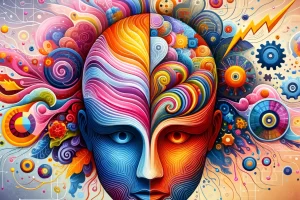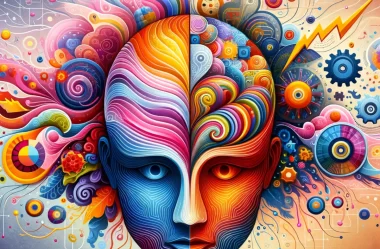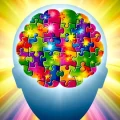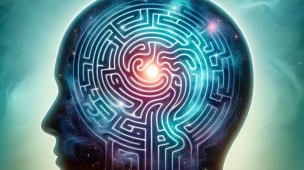“Thinking, Fast and Slow” [Summary]is a widely acclaimed book by Daniel Kahneman, a Nobel winning in Economics. Published in 2011, the book delves into the dual-process model of the human mind, describing two distinct systems that drive the way we think and make decisions:
1. System 1: This is the fast, intuitive, and emotional system. It operates automatically and quickly, with little or no effort and no sense of voluntary control. System 1 is adept at making quick judgments and decisions based on intuition and immediate perception. However, it is also more prone to biases and systematic errors.
2. System 2:This is the slow, deliberative, and more logical system. It allocates attention to effortful mental activities that demand it, including complex computations. The operations of System 2 are often associated with the subjective experience of agency, choice, and concentration. System 2 is better at reasoning tasks and is called upon when a situation is unfamiliar or requires more thorough analysis.
Throughout the book, Kahneman explores a variety of cognitive biases that affect our everyday thinking, such as overconfidence, loss aversion, and the anchoring effect. He uses numerous examples and studies to illustrate how these two systems shape our judgments and decisions, often without our conscious awareness. The book aims not only to enlighten readers about how their minds work but also to offer insights into how to make better decisions by understanding and possibly overcoming these biases.
Summary of “Thinking, Fast and Slow” by Daniel Kahneman
“Thinking, Fast and Slow” by Daniel Kahneman delves into the complexities of human thought processes, distinguishing between two distinct systems that influence our judgments and decisions. Nobel laureate Kahneman explains the capabilities, biases, and limitations of fast thinking (System 1) and slow thinking (System 2).
Key Concepts
System 1 and System 2
Summary of “Thinking, Fast and Slow”
System 1
- Rapid, automatic, and intuitive
- Responds quickly based on known patterns and feelings
- Operates with little to no effort
- Adept at making snap judgments and decisions
- Prone to biases and errors
System 2
- Deliberate, analytical, and controlled
- Requires effort and engages in complex decisions
- More reliable but often looks for easy ways out by defaulting to System 1
Understanding System 2’s Reliability and Laziness
Summary of “Thinking, Fast and Slow”
System 2’s Reliability
- Methodical and logical approach to processing information
- Less susceptible to biases and errors compared to System 1
System 2’s Laziness
- Energy-intensive and requires significant cognitive effort
- Brain conserves energy by defaulting to quicker System 1 judgments
Consequences of System 2’s Laziness
- System 2 might not intervene when its analytical skills are needed
- Reliance on error-prone System 1 can lead to suboptimal decisions and judgments
- Engaging System 2 in complex or critical situations can prevent poor decisions
Heuristics and Biases
Defining Heuristics
- Mental shortcuts for speedy decision-making without exhaustive thinking
Types of Heuristics
- Availability Heuristic: Judging the likelihood of events based on how readily examples come to mind
- Representativeness Heuristic: Decisions made by comparing information to mental stereotypes
- Anchoring Heuristic: Initial information heavily influences decisions, setting a reference point (anchor) for subsequent judgments
Common Cognitive Biases
- Confirmation Bias: Preferring information that corroborates one’s existing beliefs
- Overconfidence Bias: Unwarranted faith in one’s own intuitive judgment
- Loss Aversion: Fearing losses more significantly than valuing equivalent gains
Impact and Importance
- Recognizing and understanding heuristics and biases
- Promotes accuracy and objectivity in decision-making
- Reduces judgment errors in critical areas such as finance and health
- Enhances overall decision-making processes by highlighting areas for cognitive improvement
Prospect Theory
- Describes how people choose between probabilistic alternatives involving risk
- Challenges classical economic theory that individuals act rationally and have consistent preferences
- Highlights that people fear losses more than they value gains (loss aversion)
- Decision-making shifts based on presented reference points
Overconfidence, Framing, and Hindsight Bias
Overconfidence
- System 1’s tendency to jump to conclusions leads to overconfidence in personal beliefs
Framing
- Decisions significantly influenced by how information is presented
- Different reactions to the same fact depend on positive or negative framing
Hindsight Bias
- Belief that events were predictable after they occur, even if they weren’t foreseeable
The Two Selves: The Experiencing Self and the Remembering Self
- Experiencing Self: Lives in the present and feels pain and pleasure
- Remembering Self: Keeps score and governs the narrative of our life
- Decisions often dominated by the remembering self’s interpretation rather than actual experiences
What Readers Learn
- Gain insights into how their minds work
- Recognize frequent misjudgments and cognitive biases affecting decisions and perceptions
- Understand the dual-process model of the brain
- Encouraged to engage System 2 more effectively to navigate a world exploiting System 1’s susceptibilities
Conclusion
Kahneman’s “Thinking, Fast and Slow” serves as a comprehensive guide for better decision-making, offering profound insights into human rationality and irrationality. It encourages readers to think about thinking—to slow down and engage System 2 for more thoughtful and aware decision-making practices.
To help illustrate the concepts discussed in “Thinking, Fast and Slow” by Daniel Kahneman, consider an analogy between the two cognitive systems Kahneman describes—System 1 and System 2—and the left and right hemispheres of the brain, as well as the realms of consciousness and unconsciousness.
– System 1 is akin to the Right Hemisphere and Unconscious Processes:
System 1 operates much like the right hemisphere of the brain, which is renowned for its role in managing creative, spatial, and intuitive tasks. This system processes information holistically and rapidly, often relying on intuition rather than deliberate analysis. Similarly, it functions largely within the unconscious realm, handling immediate and automatic responses without our active engagement or awareness. This mirrors how our unconscious mind influences much of our behavior through instincts and feelings that surface without deliberate intent.
– System 2 corresponds to the Left Hemisphere and Conscious Thought:
On the other hand, System 2 is reminiscent of the brain’s left hemisphere, which is involved in language, logic, and structured thinking. This system engages when we tackle problems that require focused and logical thought, akin to activities that demand conscious effort and attention. Whether it’s solving a complex problem or making a calculated decision, System 2 is at work, employing a slow, methodical approach to digest and analyze information.
This analogy serves to simplify the complex interplay between our intuitive and rational faculties. While the division of brain functions into hemispheres is more nuanced in reality, and both cognitive systems can influence each other, this framework offers a useful lens through which to view the dynamic processes that govern our thinking and decision-making.

The Money Wave Review: Audio Program
Join us for a deep dive into The Money Wave REVIEW, where we’ll provide an objective review of this manifestation program. In this event, we’ll

Superintelligence Summary by Nick Bostrom
Nick Bostrom’s “Superintelligence: Paths, Dangers, Strategies” critically explores the emergence, control, and development of artificial intelligence (AI) systems that may soon surpass human intelligence in

Summary of “Thinking, Fast and Slow” by Daniel Kahneman
“Thinking, Fast and Slow” [Summary]is a widely acclaimed book by Daniel Kahneman, a Nobel winning in Economics. Published in 2011, the book delves into the

Brainstorming: Unleashing Your Team’s Creative Power
Imagine a world where the lightbulb was never invented and where the concept of the World Wide Web remained a figment of science fiction. These

Meditation: A Comprehensive Guide
In our fast-paced world, brimming with distractions and stress, finding a moment of peace can seem almost impossible. This is where meditation—a profound, yet simple

Transcendental Meditation: Unlocking Clarity.
Introduction to Transcendental Meditation Transcendental Meditation (TM) is a form of silent mantra meditation developed by Maharishi Mahesh Yogi. This method involves the use of












